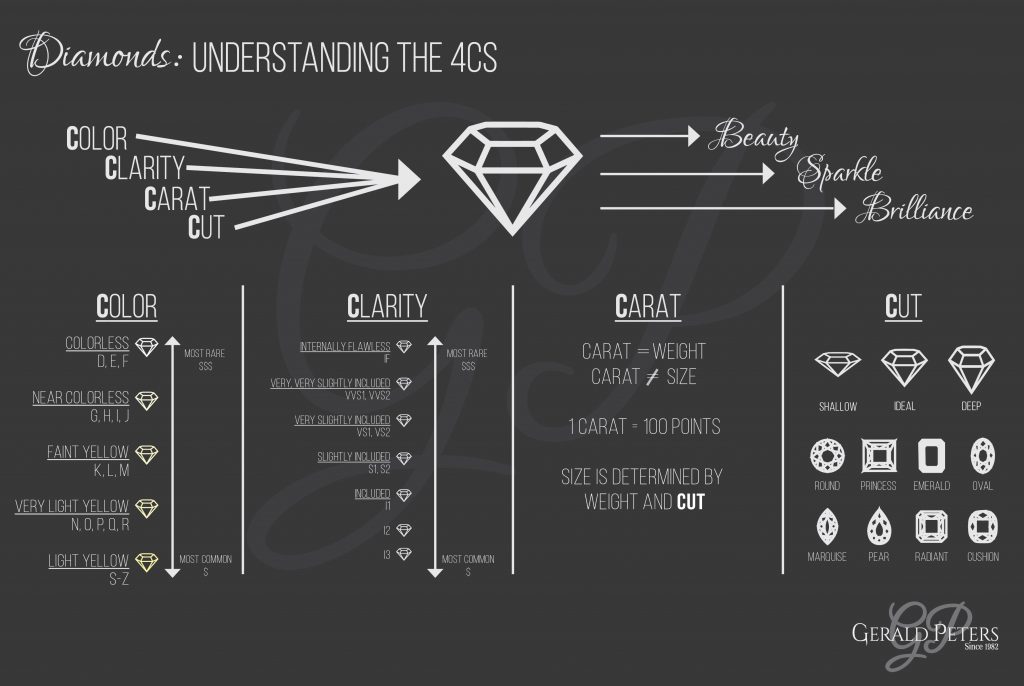Diamonds 101: Understanding the 4C's
September 19th, 2016
Engagement rings are considered to be the most important purchase of your life- it is something you will wear every single day for the rest of your life. Some people may argue that and say a house or car is more important- however the average American will own over 12 cars in their life and according to the US Census Bureau, the average American moves nearly 9 times in their lifetime- but your engagement ring is one of the few things you will have forever. At Gerald Peters, we work hard to make sure your ring purchase is as perfect and unique as your love is and help you to feel confident in your diamond selection.
Buying a diamond can be overwhelming, so we've broken down the basics of the 4Cs to help you understand what to expect when looking for the perfect stone for your ring!
- Color: The color scale is classified from colorless to light yellow. Colorless diamonds are the most rare, but diamonds of faint yellow, very light yellow, and light yellow tones have become increasingly popular due to their unique look and sunshine like sparkle.
- Fun Fact: Diamonds are also (rarely) found in other colors that do not fall under the spectrum of colorless-yellow, such as, the Le Vian signature Chocolate Diamonds, almost unheard of pink and red diamonds, or the famous blue Hope Diamond.
- Yellow diamonds are also becoming increasingly popular due to their golden sparkle and vintage look.
- Clarity: The clarity of a diamond is determined by its inner flawlessness. The less visible any flaws are, the higher the cost of the stone. Stones that are classified as "internally flawless" are the most rare. Some imperfections are not visible to the naked eye, which is why we show our clients each stone under a loupe so they can see exactly how clear the diamond is.
- Carat: Carat weight is the unit by which a diamond is measured. Though larger diamonds have higher carat weights, the carat weight is NOT the same thing as the diamond's size. The visible size of a diamond is equally dependent on cut as it is on carat.
- Cut: Cut is the shape in which the diamond is cut. Ideal cut diamonds are cut in a way that optimizes the amount of light the stone is able to reflect and refract. Different shaped diamonds with varying numbers of facets reflect the light in different ways and give the stone a unique look and personality and can be chosen to compliment the wearer's personal style.
DO: Know which aspects are most important to you- for some, color is the most important factor, while others would rather opt for a more common color in order to get a bigger carat weight. Here at Gerald Peters, we hand select only the best diamonds for you to see, and show you all your options to ensure that you find your perfect stone for your budget.
DON'T: Judge a stone by the specs you see on paper. While the 4Cs are important for determining the quality of the stone, seeing it in person is what determines the beauty of it. You may have the exact color, clarity, and carat weight you want in your mind, but you cannot truly judge the beauty of any stone until you see it for yourself.
Here at Gerald Peters, we want all of our diamond clients to feel confident when purchasing their stone from us. By breaking down all the specs you would see when viewing diamonds, we hope to help everyone understand what can otherwise be an overwhelming experience.


